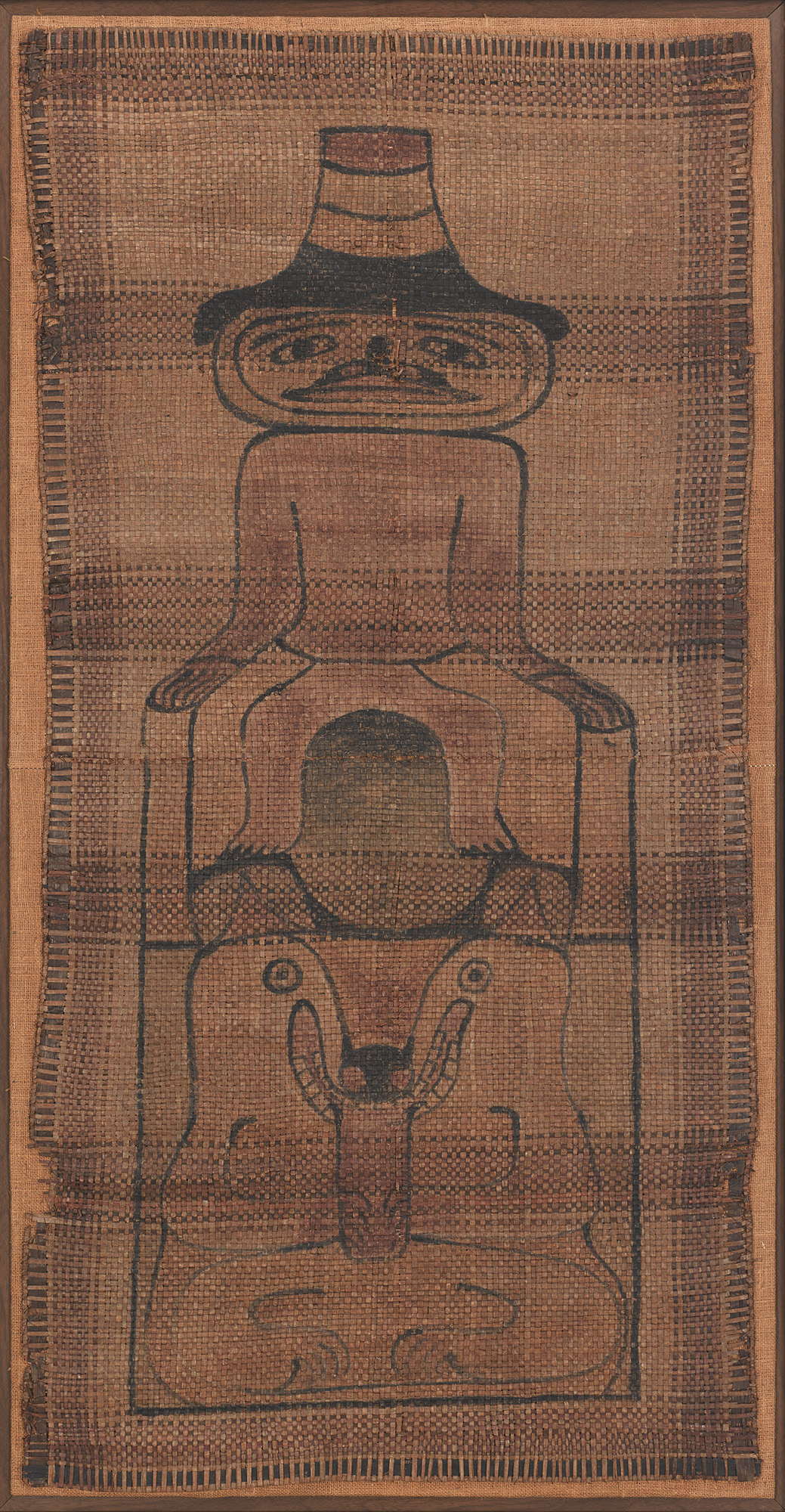Object of the Week: Cedar Bark Mat

While this Haida cedar bark mat from ca. 1900 reads like a painting—mounted and viewed two-dimensionally—its function was primarily utilitarian. This mat, meticulously woven from cedar bark, and others like it would serve a multitude of purposes: such mats could be found on walls or in doorways to prevent cold drafts and rain, or used as room dividers. Other times they might be used when foraging and drying berries, or for comfort when digging clams and cleaning fish. On more special occasions, these mats would be presented as potlatch gifts or as ceremonial ground cover.
A number of things can be fashioned from cedar—its bark is especially versatile, processed and turned into what is in essence a thread. Cedar tree people appear throughout Haida oral tradition, and cedar bark, essential to everyday life, is known as “every woman’s elder sister.” Like an older sister, cedar bark deserves respect and helps its younger sister by providing material for clothing, baskets, and other important items. The mat itself, with its overlapping bands and geometric gridding, was also woven by a Haida woman. (The painting on the mat was likely added by another—male—Haida artist.)
Yaqui poet Richard Walker wrote a poem, The Cedar Tree (excerpted below), which celebrates the importance of the cedar tree for First Nations and Northwest Coast peoples, and the wide-ranging activities and traditions that are passed on from one generation to the next as a result:
And what else do we know, but that
This tree continued the life,
growing to great heights,
providing shelter for birds and
other animals,
providing bark fiber for clothing,
and for fishing nets,
providing bark fiber for baskets
in which to collect berries or cook shellfish,
fine woven baskets that are passed from
mother to daughter, and from grandmother
to granddaughter?
– Elisabeth Smith, SAM Collection & Provenance Associate